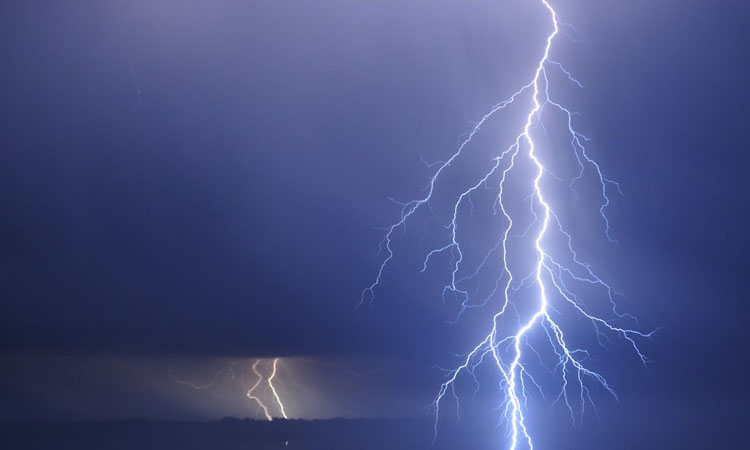News Flash

By Rafiqul Islam
DHAKA, Oct 6, 2025 (BSS) – The frequency and intensity of lightning will increase in Bangladesh in future, while rural people will be affected most for lack of access to early warning systems and protective infrastructures, according to an expert.
“Communities in rural and remote areas, often engaged in outdoor activities like farming and fishing, remain at high risk due to limited access to early warning systems and protective infrastructure,” senior meteorologist and climate expert Dr Md Abdul Mannan told BSS today.
He observed Bangladesh faces an increased risk of lightning-related disasters due to ongoing climate change.
The number of thunderstorms and lightning strikes is likely to rise, particularly during the pre-monsoon season, due to higher Convective Available Potential Energy (CAPE), a key indicator of thunderstorm potential, levels and atmospheric instability, the meteorologist said.
He predicted that the areas previously less affected by lightning may experience more frequent events as climatic conditions become more conducive to thunderstorms across Bangladesh.
He said Bangladesh is experiencing a troubling rise in lightning-related fatalities, with over 300 deaths annually, making it one of the most lightning-prone countries globally.
This surge is closely linked to climate change, which is intensifying atmospheric instability and increasing the frequency of severe thunderstorms, he adde.
At least eight people were killed in lightning strikes in four districts of the country in a single day on October 5 (Sunday).
About the key factors driving the increase in lightning strikes, Dr Mannan said global warming is elevating temperatures, leading to higher CAPE.
He said several studies projected a 45 percent increase in CAPE during the Bangladesh's pre-monsoon season, heightening the risk of intense thunderstorms.
Worsening air quality, exacerbated by regional pollution, contributes to increased lightning activity, the climate expert said, adding that research indicates a strong link between elevated pollution levels and heightened lightning strikes in Bangladesh.
He said the removal of tall trees, which previously attracted lightning strikes, has left rural areas more vulnerable. This loss reduces natural lightning protection, increasing the risk to communities, he said.
About geographic and seasonal vulnerability, Dr Mannan said Bangladesh's location in the Indo-Gangetic Plain makes it susceptible to intense pre-monsoon thunderstorms.
Combination of high humidity, rising temperatures, and atmospheric instability during this season creates ideal conditions for frequent lightning events, he added.
According to a latest regional study, Bangladesh records the highest number of lightning-related deaths per square kilometer in South Asia.
Despite its small size, the country’s dense population in rural areas and the outdoor-based livelihoods heighten its vulnerability to lightning strikes.
The study identifies the pre-monsoon season — especially between 4:00 p.m. and 6:00 p.m. — as the peak period for lightning activity.
Data of Bangladesh Meteorological Department revealed that an average of 300 people die from lightning strikes in Bangladesh each year, with the highest number of fatalities reported in the country’s northeastern districts - Sunamganj, Netrakona and Sylhet.
From 2016 to 2023, Bangladesh recorded about 120 lightning strikes per square kilometer per year. One-third of those struck the ground.